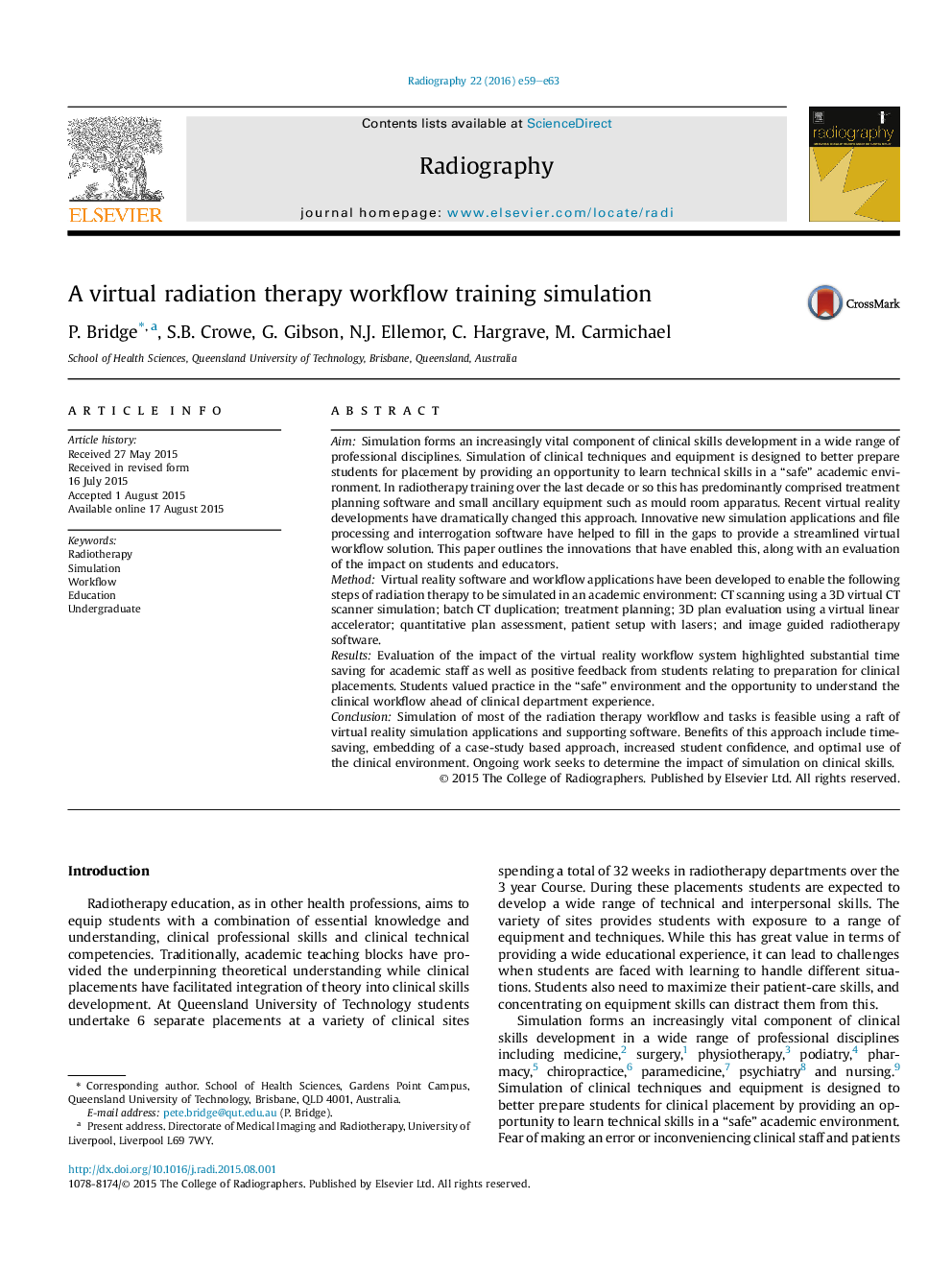| کد مقاله | کد نشریه | سال انتشار | مقاله انگلیسی | نسخه تمام متن |
|---|---|---|---|---|
| 2737308 | 1148044 | 2016 | 5 صفحه PDF | دانلود رایگان |
• Virtual reality simulation of the radiotherapy workflow is feasible in an academic environment.
• Students value “safe” experience of the clinical workflow ahead of real department placement.
• Workflow simulation increases student confidence and optimises use of the clinical environment.
AimSimulation forms an increasingly vital component of clinical skills development in a wide range of professional disciplines. Simulation of clinical techniques and equipment is designed to better prepare students for placement by providing an opportunity to learn technical skills in a “safe” academic environment. In radiotherapy training over the last decade or so this has predominantly comprised treatment planning software and small ancillary equipment such as mould room apparatus. Recent virtual reality developments have dramatically changed this approach. Innovative new simulation applications and file processing and interrogation software have helped to fill in the gaps to provide a streamlined virtual workflow solution. This paper outlines the innovations that have enabled this, along with an evaluation of the impact on students and educators.MethodVirtual reality software and workflow applications have been developed to enable the following steps of radiation therapy to be simulated in an academic environment: CT scanning using a 3D virtual CT scanner simulation; batch CT duplication; treatment planning; 3D plan evaluation using a virtual linear accelerator; quantitative plan assessment, patient setup with lasers; and image guided radiotherapy software.ResultsEvaluation of the impact of the virtual reality workflow system highlighted substantial time saving for academic staff as well as positive feedback from students relating to preparation for clinical placements. Students valued practice in the “safe” environment and the opportunity to understand the clinical workflow ahead of clinical department experience.ConclusionSimulation of most of the radiation therapy workflow and tasks is feasible using a raft of virtual reality simulation applications and supporting software. Benefits of this approach include time-saving, embedding of a case-study based approach, increased student confidence, and optimal use of the clinical environment. Ongoing work seeks to determine the impact of simulation on clinical skills.
Journal: Radiography - Volume 22, Issue 1, February 2016, Pages e59–e63
